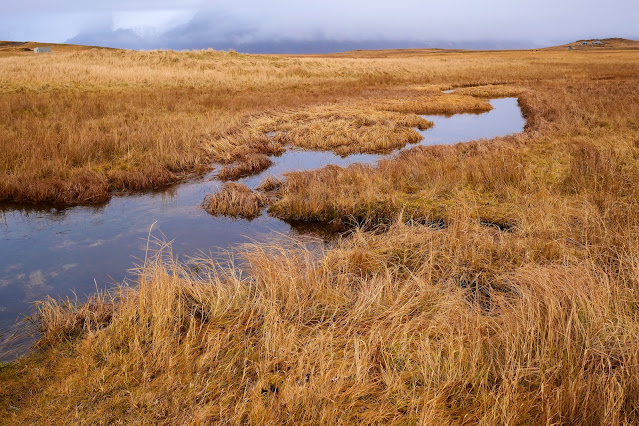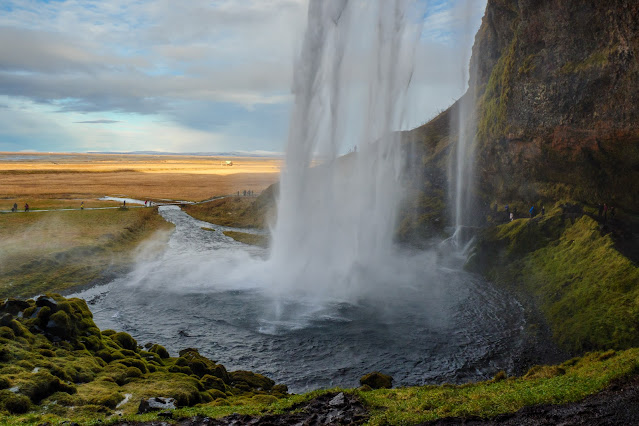I left JFK Airport on my birthday in late October 2018 heading to Iceland for a week long trip. While I was there I posted images to the blog and wrote stuff but I was also in near constant contact with my father's caretakers and my siblings. My father's dementia became much worse after my mother's death and as the executor, administrator and all around person most responsible it felt like a big reach to be away from my dad for even a week. If I wasn't the kind of person who, at that time, mostly operated from a place of general anxiety I might have soothed myself with the knowledge that my dad was in the best memory care facility in San Antonio and getting round the clock care. But with anxiety one is nearly always waiting for the next shoe to drop...
After I returned I backed-up the photos I'd taken onto several hard drives and promptly ignored them for several years. There were a few images that I'd included in blogs and they were within easy reach so I've used them to illustrate posts here and there. The rigors of navigating work, family and the care of my father demanded my full attention at the time. The images from Iceland weren't needed in the moment and so laid fallow. But recently my re-entry into the Panasonic m4:3 world prompted me to go back and make a more thorough evaluation of my best examples from that previous tenure with the system. And the images from the G9s loomed large.
I remember bringing along two Panasonic G9 cameras and a handful of lenses. I brought along the Olympus 12-100mm f4.0 Pro, the Panasonic/Leica 15mm f1.7, the Panasonic 8-18mm and the Sigma 30mm f1.4 Contemporary. Everything packed down into a small, easy to manage backpack and that backpack fit under the airline seat in front of me. The system was manageable and easy to use. I remember, at the time, being impressed with both the battery life and also the incredible image stabilization but later realized that the quality of the raw files and Jpegs were the real selling points of the cameras. That and the "all weather" handling.
The finder in the G9 is still competitive in the current market and successive firmware updates have actually ensured that the video performance of the camera is also highly competitive with current camera models from various systems. In all I shot well over 7000 images and fewer than 1% were marred by technical issues stemming from the cameras or lenses. Most of the failures were from attempts to handhold the system at far too low a shutter speed (too much subject movement) or my own failure to fine tune exposure. The usual dig at Panasonic's m4:3 cameras is focusing accuracy but there were no signs whatsoever that this was a weak point in my use of the cameras.
My father is gone. My mortgage is paid off. The happy burden of paying for Ben's university experience is in my rear view mirror. I have time now to look back at projects, many of which I probably rushed through too quickly. With my renewed interest in the small format system it seemed only natural to go back and re-introduce myself to my own "lost" work.
My biggest realization is just how good the lenses for the m4:3 system are. From both makers. I'm re-amazed at how wonderfully sharp and satisfying the 12-100mm lens is. It's even better in 2022 than it was in 2018 in large part because I shot so many raw files and now Lightroom and Photoshop have become better and better at digging into, and revealing, the detail and scope of the files. The post processing control is downright intoxicating. And perhaps some of that feeling is down to being able to take time to really work a file when I want to. The 15mm f1.7 was a wonderful street shooting lens for me because it's small and light but gives a wonderfully even tempered look to the files it creates. The 8-18mm lens was a sleeper. Now the software corrections are so good that the lens looks miraculous.
I re-imported all the files into Lightroom and I can see some faults in the way I shoot in general. I tend to shoot too many frames with too few substantive changes between frames. I guess, in the moment, if one frame is good then a dozen seems better. The mindset being that I might stumble across a slight difference that makes all the difference in the world to the photographs. I'm also reticent to change lenses when I really should. I try to cram whatever I'm shooting into the parameters of whatever lens I currently have clicked onto the front of the camera. I should be less lazy...or carry more cameras with different focal lengths attached to each.
The current rev of Lightroom has powerful masking tools that allow for quick, localized color and exposure corrections. This capability didn't exist when I first barreled though the images in 2018. Now I use it liberally and it's a godsend for skies that are too light or foregrounds that are rendered too dark. I'm evolving a more "hands on" methodology...
The G9 is a five or six year old model now but the images seem to me to have just as much overall quality as the files I'm getting from current cameras. It makes me consider buying another one. But I'll wait and see if Panasonic comes out with an upgrade to that model this year. For now it's the lenses that have me captivated.
I guess this whole experience is a lesson I need to learn over and over again. That it's better to dive deeper into images from a project than it is to move more quickly. That, and perhaps it's a good idea just to hang on to cameras that deliver the goods. No matter how much greener the grass looks over on the other side of the glaciers...
Marshes next to the coast line.
I despair of never becoming a decent landscape photographer.
But that doesn't mean I won't stop trying...




































